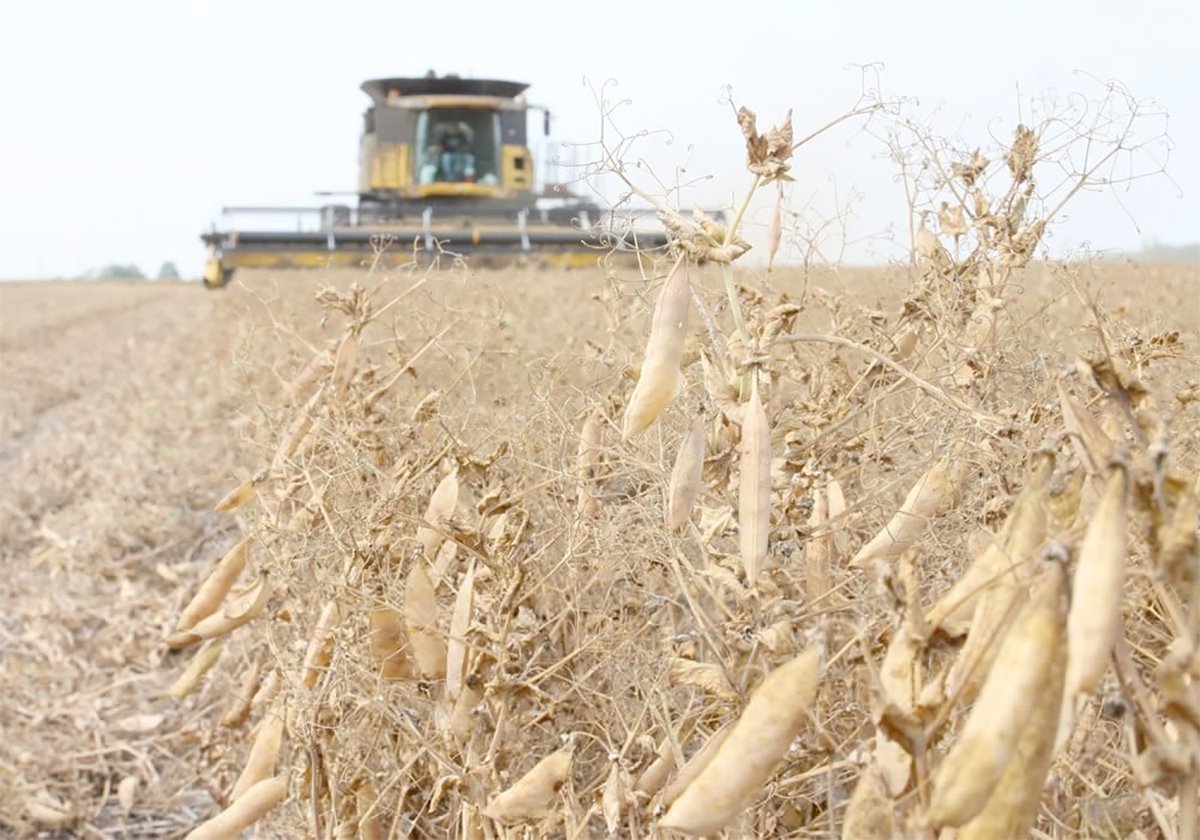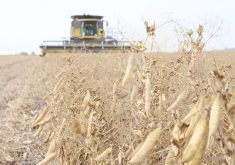Crop Production Week | Analyst says to hold on to flax
Producers who are sitting on flax supplies should stay on their perch for awhile, says a market analyst.
“I would not be selling at these depressed levels,” Larry Weber of Weber Commodities told growers attending the Flax Day 2012 portion of Crop Production Week.
“Right now you are in the driver’s seat.”
He believes prices have to rise at least $2 to $3 per bushel for flax to remain competitive with canola.
New crop canola is selling for $12 per bu. delivered. New crop flax bids are $11 per bu. Using last year’s yields, that results in a $136.40 gross revenue per acre advantage for canola.
Read Also

Chinese, Indian tariffs take toll on pea prices
The disruption of pea exports from Canada’s largest customers will likely result in slow pea exports for the remainder of the crop year.
Weber acknowledged that flax seed doesn’t cost as much as canola seed, but that is still a huge difference to overcome, especially given that farmers are paying to test their flax seed for Triffid contamination.
“If there are buyers in this room today, either you guys start anteing up flax bids or I don’t think that we can get to half a million acres next year. The math doesn’t work,” he said.
Growers seeded 694,000 acres of flax last year, down 230,000 acres from the previous year. Dropping to 500,000 acres would be a big blow for a struggling crop.
“At 500,000 acres, flax is going to become a rye,” said Weber.
He believes the solution to the flax industry’s woes is to lose the focus on export markets in favour of a domestic crush industry, sparking a “canola-type revolution” that could help stabilize acres.
Weber said there are huge profits in crushing flax. By his calculation, a facility could realize a gross margin of $226 per tonne.
“When you take a look at the margins that are available on the flax seed, I’m hard pressed to understand why we don’t have any crushing facilities here,” he said.
There is one crusher in Manitoba and one in Saskatchewan, but they are small operations. Weber believes there is room for another 150,000 to 200,000 tonnes of crush capacity.
Weber said the industry could stop exporting value-added margins to China if that capacity is constructed. China is crushing the crop and marketing the oil to the European Union.
“That has got to stop,” he said.
SaskFlax director Dave Sefton said the solution isn’t as easy as Weber is portraying. The Saskatchewan Flax Development Commission has been studying the issue for years and the problem is always what to do with the meal.
He noted that meal comprises 60 percent of what a crush facility produces, but flax meal isn’t as valued as canola and soybean meal. As well, it can be difficult to find a home for the product. A crusher would have to ship the meal to Asia or the European Union, but that is an expensive prospect.
Weber said the canola industry had the same dilemma until it found a good market for its meal in dairies in the U.S. Pacific Northwest.
He told Sefton that finding a solution to the meal dilemma should be the association’s personal mission in 2012 and that governments should also step up because the industry desperately needs more domestic crushers.















